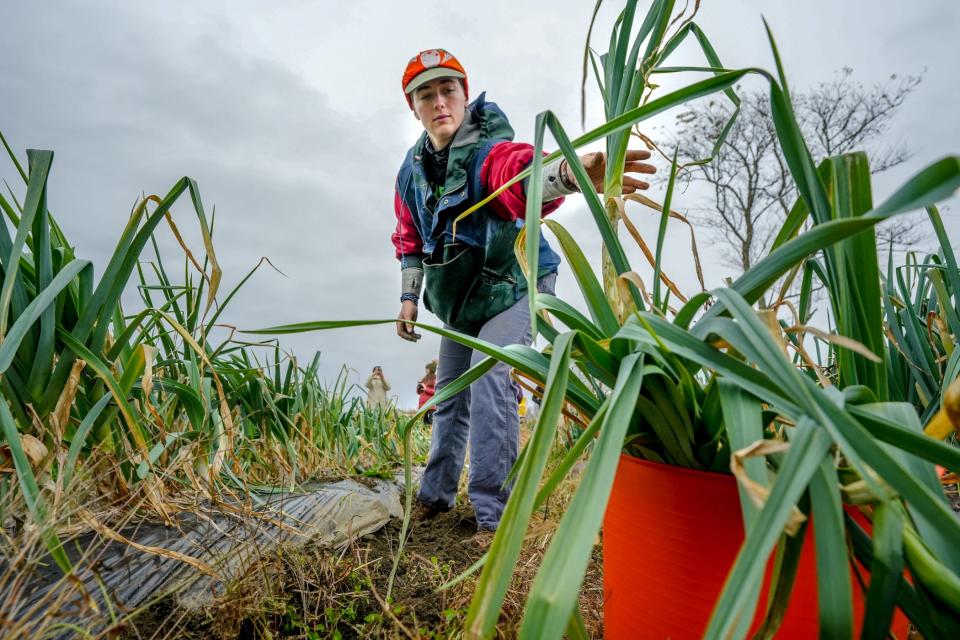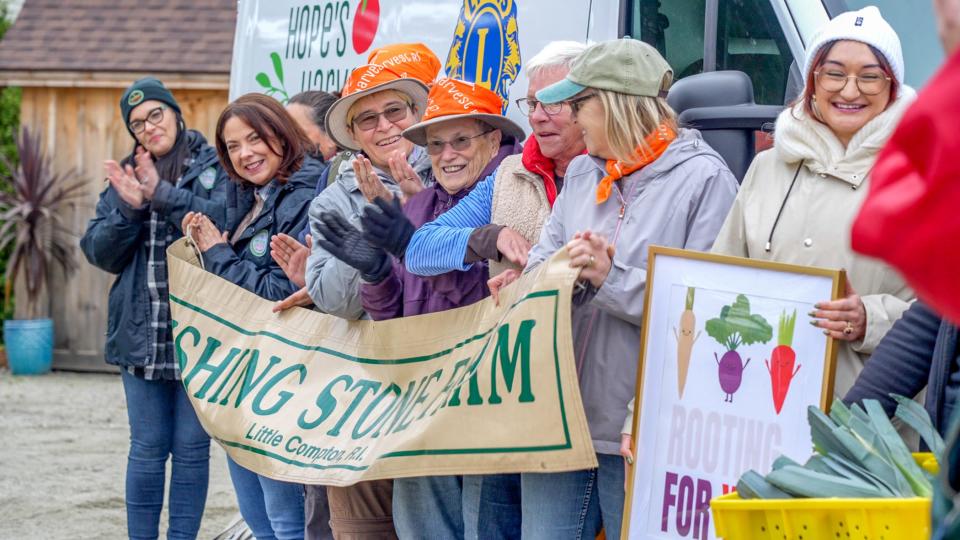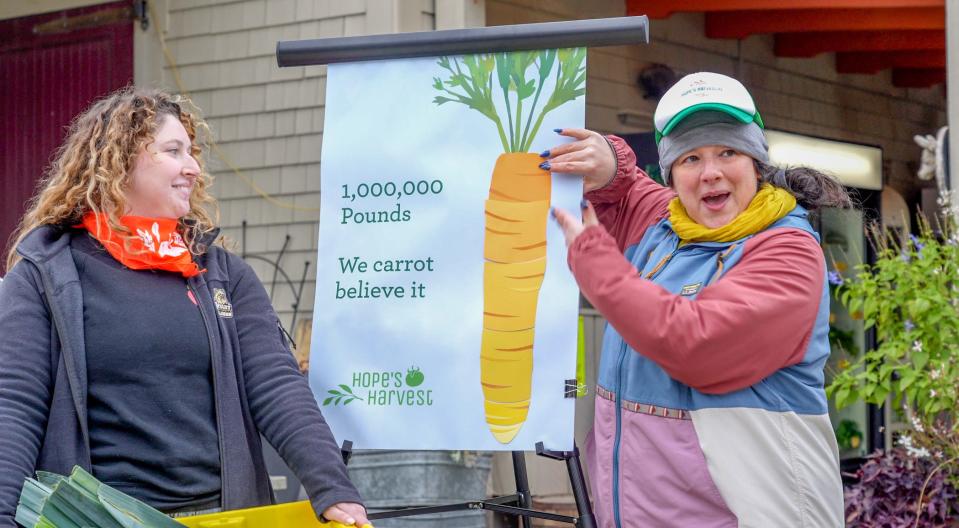Don't waste that leek: How this RI organization saves 1 million pounds of food from waste
LITTLE COMPTON – As it rained and rained and rained this summer, the weeds took advantage of the abundance.
For the most part, Silas Peckham-Paul and the crew at Wishing Stone Farm in Little Compton fought the battle well, but there was one row of leeks that they got to just a little late.
To an untrained eye, the leeks were still perfect. But to those who know, the weeds had choked out the leeks just enough that they were on the skinny side. Too skinny, Peckham-Paul said, to sell to a wholesaler, such as Whole Foods.
“They’re pretty persnickety about the certain size leek they want,” he said. “But they’re still awesome leeks.”
So when Eva Agudelo called him up last week and asked if there was any food in his field that could be gleaned by volunteers and donated to Rhode Island’s food banks, he offered up the entire row of leeks, which amounts to 345 pounds of alliums.

Hope's Harvest hits 1 million pounds of recovered foods
Agudelo is the value chain strategy director for Hope’s Harvest, one of the core programs at Farm Fresh RI. What the long title means is that since the operation was founded in 2018, she’s been the one connecting farmers to food relief programs and, with her team, coordinating what needs to happen to make it possible.
She calls a lot of farmers – the organization works with 56 local farms – looking for excess food.
“It’s not a complicated concept,” she said. “If there’s food that doesn’t get harvested, it goes to waste, and everybody hates that.”
Thursday morning's leek harvest marked a milestone for the program: 1 million pounds of recovered food that otherwise would have been composted.

Hope Harvest recovered the food both through gleaning, which is what volunteers were doing Thursday as they pulled up and sliced the leeks, and through surplus purchasing and contracting with local growers.
There was a little fanfare for the moment, a short speech and photo op before heading out to the field, some congratulations, but mostly the assembled crew just wanted to get picking.
“It’s fulfilling,” said Ellie Hull, who has put in over 100 volunteer hours this year with Hope’s Harvest. “You know that you are providing food for people and you – you know, doing good deeds.”
The leeks were distributed to St. John’s Lodge Food Bank in Portsmouth, East Bay Food Pantry in Bristol and East Bay Community Action Program in Newport. But over the last five years, more than 1,000 Hope’s Harvest volunteers have delivered fresh food to 53 hunger relief agencies in the Ocean State.
State of food insecurity in Rhode Island
Even as Hope’s Harvest has scaled up to be able to serve about 35,000 food-insecure Rhode Islanders a month, food insecurity is the highest it’s been in years.
The Rhode Island Community Food Bank's 2022 status report showed that nearly one-third of Ocean State residents are food insecure, triple the level recorded in 2017. The pandemic and increased food prices were cited as reasons for the increase.
What’s next for Hope’s Harvest?

Agudelo said the goal isn’t for Hope’s Harvest to grow big, but to feed people and support farmers.
"Even if we see a decrease in the amount of food that we're gleaning, that's not necessarily a bad thing because it might mean that instead the farmers are finding markets for their products that they weren't being able to access otherwise, through programs like Farm to School or through programs like the local food purchasing agreement, where we're able to buy surplus, Agudelo said. "I think that creates a really vital circle where everybody is really getting what they need and the food system is working for everybody."
Plus, it moves the food system away from those persnickety rules about how big a leek should be and focuses it back on feeding people and paying the people with the skills to grow it.
“Hunger relief agencies don’t care if your cabbage is a little bit too big or your apples are a little bit too small. It’s food and we’ll buy it,” Agudelo said. “We want to take care of everyone involved in the process.”
Anyone interested in getting involved as a volunteer, farm, or agency partner can reach out to Hope’s Harvest Operations Manager Shannon Hickey at HH@farmfreshri.org.
Correction: An earlier version of this article misspelled Eva Agudelo's name.
This article originally appeared on The Providence Journal: Hope's Harvest stops RI farm grown food from being thrown away

